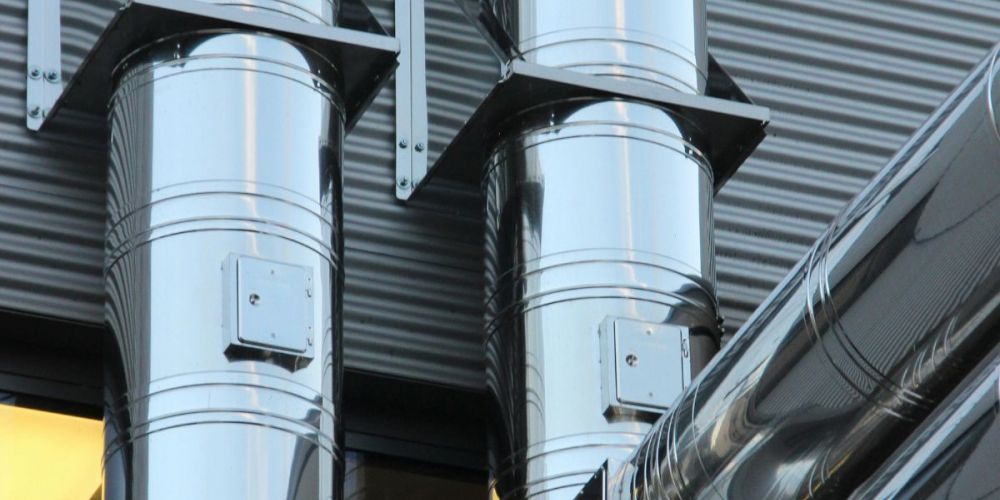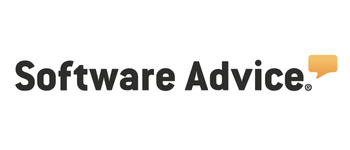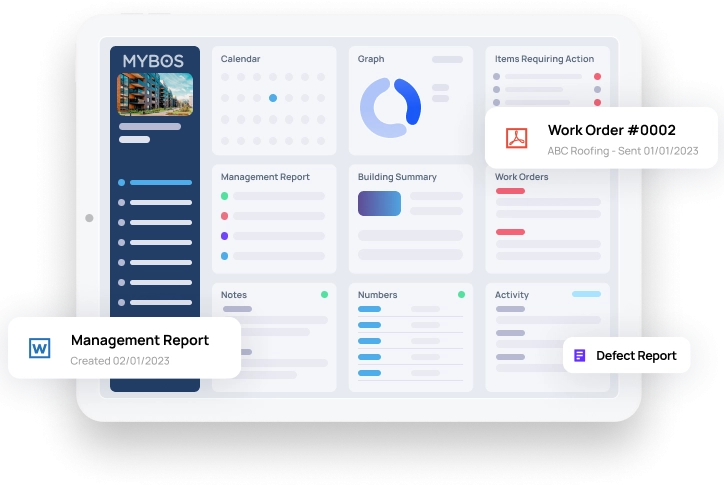
Building Asset Management vs. Asset Tracking: What’s the Difference?
Do you know where your building’s assets are, or how well they’re performing? Keeping track of building assets is essential for efficient operations—but not all asset solutions are created equal. Two common terms often used interchangeably are asset tracking and asset management. While they share similarities, understanding the distinction is crucial for property professionals looking to optimise building performance, reducing inefficiencies, ensuring compliance, improving ROI, and making smarter asset-related decisions.
According to Deloitte, implementing predictive maintenance solutions can modernize operations by connecting machines to reliability professionals, optimizing operations in real time, and providing advance insights into failures, thereby maximizing asset life while avoiding disruption.
With that in mind, let’s explore the differences and how each one fits into a modern building management strategy. Whether you’re overseeing a single property or managing a portfolio, we’ll help clarify which system best suits your needs—and how to get the most value from each.
What Is Building Asset Tracking?
Building asset tracking refers to the method of monitoring and recording the physical location, status, and usage of assets in real time. These assets might include HVAC units, lighting systems, elevators, pumps, fire systems, and other equipment critical to building operations.
Today, most asset tracking is done using barcodes, QR codes, or RFID tags linked to cloud-based software systems. This allows for real-time visibility, helping building managers reduce loss, improve compliance, and ensure nothing falls through the cracks.
But tracking only shows where an asset is and how it’s being used, not how well it’s performing or how much value it’s delivering over time.
If you’re not yet recording the right details about each asset, check out our guide on what details you should be putting in your asset register.
What Is Building Asset Management?
Building asset management, by contrast, is the broader, strategic process of maximising the value of those assets over their full lifecycle. From acquisition and deployment to ongoing use and eventual replacement or disposal.
Asset management is far more than location tracking. It includes:
- Lifecycle planning – Forecasting repair and replacement timelines
- Preventative maintenance – Reducing downtime and unexpected breakdowns
- Condition monitoring – Analysing performance to ensure long-term reliability
- Regulatory compliance – Keeping assets up to standard
- Cost optimisation – Reducing wasted spending by managing use and replacement cycles
A proper asset management plan integrates many tools and data points, including asset tracking, as part of a broader, smarter building management strategy.
For an in-depth look at managing scheduled upkeep, explore our post on asset maintenance scheduling and records.
Key Differences Between Asset Tracking and Asset Management
Understanding the distinction between asset tracking and asset management is crucial for effective facility operations. As highlighted in a recent article from FM Media, integrating comprehensive asset management systems can enhance project performance and financial forecasting, leading to improved decision-making and resource allocation.
The table below summarises some of the key differences between asset tracking and asset management at a glance:
| Category | Asset Tracking | Asset Management |
| Purpose | Focuses on monitoring the location and current status of assets. | Aims to understand and optimise the asset’s value over time. |
| Tools Used | Involves barcodes, GPS/RFID tagging, and cloud-based logs. | Utilises tracking inputs plus analytics, forecasting tools, and cost modelling systems. |
| Scope | Tactical – about inventory and records. | Strategic – about lifecycle value, compliance, and budgeting. |
| Outcome | Helps prevent loss or duplication. | Improves decision-making, extends asset life, and reduces operational costs. |
Why Tracking Alone Isn’t Enough
Imagine you’re tracking a pump in your building. You know where it is, how long it’s been in use, and maybe even the last time it was maintained. That’s helpful but it’s not enough.
Without a preventative maintenance plan, you won’t know when it’s due for servicing. Without financial tracking, you don’t know if it’s worth replacing. And without lifecycle management, you’re operating reactively, not proactively.
If you’re looking to transition from reactive fixes to a predictive, long-term approach, start with our guide on how to successfully manage preventative maintenance.
Why Building Asset Management Adds More Value
Integrating asset tracking into a comprehensive asset management system yields substantial benefits, including enhanced budgeting, minimized downtime, and extended asset lifespan. As highlighted by Cushman & Wakefield, strategic asset optimization, such as investing in energy-efficient buildings, not only reduces operational costs but also appeals to environmentally conscious tenants, thereby enhancing overall asset value.
When you integrate asset tracking into a broader asset management system, you unlock benefits like:
- Improved budgeting – Asset history and performance data allow for accurate forecasting.
- Less downtime – Scheduled maintenance prevents costly surprises.
- Increased asset lifespan – Well-maintained assets last longer and perform better.
- Greater transparency – Everything from compliance logs to depreciation reports is easily accessible.
- Data-driven decisions – Managers can make smarter calls on replacement, upgrades, or disposals.
Choosing the Right Software for Your Building
Selecting the appropriate facility management software is crucial for streamlining operations and enhancing efficiency. Key findings from another FM Media article have highlighted that collecting data alone isn’t enough – teams must identify the right data to collect, ensure its quality, and use it to gain actionable insights that align with strategic goals. By focusing on meaningful metrics and leveraging standards like ISO 55000, facility and building management teams can shift from reactive to predictive asset management, improving equipment effectiveness, reducing downtime, and making smarter, cost-effective decisions.
The best tools combine both capabilities. A modern facility management software platform should offer:
- Real-time asset tracking and scanning
- Maintenance scheduling
- Asset lifecycle reporting
- Customisable dashboards and notifications
- Easy integration with other building systems
This is where MYBOS comes in. Our platform simplifies both equipment tracking and equipment maintenance, helping building and strata managers stay in control and compliant while saving time and money.
From Tracking to Full Management: Choosing the Right Approach for Your Building’s Needs
As buildings become smarter and more complex, the tools used to manage them must evolve too. The line between asset tracking and asset management isn’t just semantic—it can significantly impact how well your building runs.
Asset tracking is a great starting point for visibility—knowing what assets you have, where they are, and their current condition. But for buildings that require proactive maintenance, long-term planning, and operational efficiency, asset management offers a broader, more strategic solution. Understanding the difference allows building teams to align their tools with their goals.
If you’re ready to elevate your building’s operations with integrated asset oversight, book a demo with MYBOS today and see how our tools can streamline your workflow, improve performance, and save on long-term costs.








